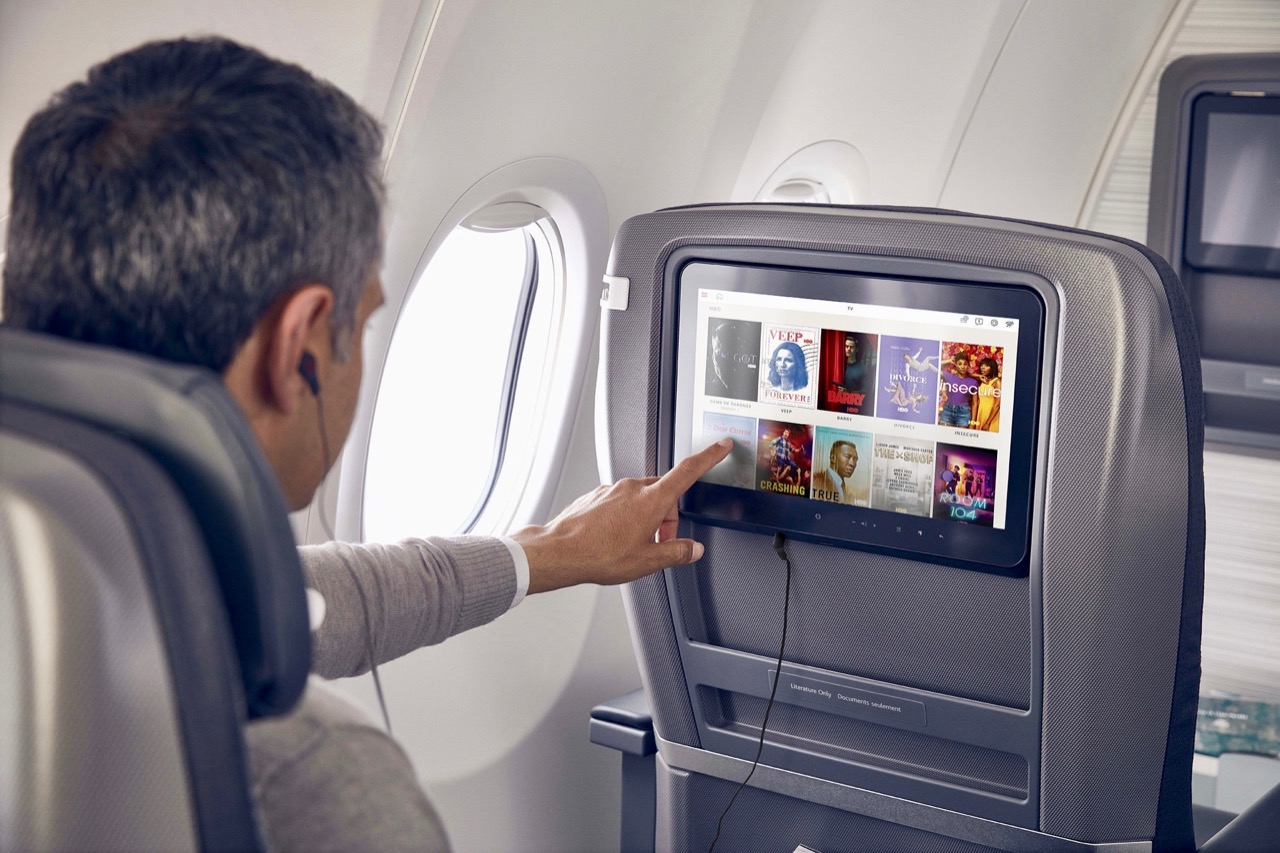No compromise for Air Canada
This is a special feature from PAX Tech's April Aircraft Interiors Expo Hamburg 2020 edition.

Air Canada Vice President of Product Andrew Yiu
To find what Air Canada’s Vice President of Product Andrew Yiu called a fleet addition that comfortably fills the “Goldilocks Zone,” executives did not have to look far, in fact only about 30 minutes down the road.
Bombardier manufactured A220-300 in a partnership with Airbus Canada that lasted until February of this year. It was then the company announced that it has transferred its remaining shares in aircraft to Airbus Canada. However, with a long-term commitment by the Government of Québec in the form of a 25 percent share, production and jobs will remain in Montreal.
As part of the agreement, Airbus has acquired the Airbus A220 and A330 production capability from Bombardier in Saint-Laurent, Québec. The production activities will be operated in the Saint Laurent site by Stelia Aéronautique Saint Laurent Inc., a newly created subsidiary of Stelia Aerospace, which is a 100 percent Airbus subsidiary. Airbus also makes the A220 at a second assembly line for the aircraft opened this past summer in Mobile, Alabama.
From the beginning, the A220 Bombardier C series was billed as a way for airlines to maximize opportunities and compliment larger single-aisle aircraft. With its comfort levels and range at 3,500 plus nautical miles, Bombardier insisted that it was not building a regional jet that the industry had become accustomed to seeing.
And the national pride of Canada flies on the wings of the new A220-300. The airline has an order of 45 aircraft runs through June of 2022. The order represents and investment of US$3.8 billion for Air Canada.
PAX Tech caught up with Yiu at the airline’s new lounge in Toronto at the start of this year, as the airline was poised to put the A220-300 in the air on its first route from Montreal to Calgary. Soon, other A220-300s will be on routes from Toronto to San Jose, California and from Montreal to Seattle. The latter two routes are scheduled for May of this year.
“The A220-300 represents an aircraft of no compromise for us,” Yiu says. “It is the right aircraft with the right range, that delivers a premiere service.
“Now the amenities and products you see on large widebody aircraft can be delivered to destinations all across North America.”
Canadians wired into the aviation community first knew the aircraft as Bombardier’s C-Series. It became part of a longstanding debate in Toronto when regional carrier Porter Airlines unsuccessfully lobbied the city to allow it to operate out of Billy Bishop Toronto City Airport on the Toronto Islands. With a range of between 3,500 and 3,800 nautical miles, the addition would have greatly enhanced Porter’s possibilities of opening up new routes.
The A220-300 is manufactured through a partnership with Airbus and Bombardier at a facility in Mirabel, Quebec, a suburban of Montreal. Airbus opened a second assembly line for the aircraft this past summer in Mobile, Alabama. Air Canada is the second North American airline – after Delta Air Lines – to operate the aircraft and the launch customer on the continent for the larger A220-300 version. Nose to tail, it is the product of Canadian manufacturing with more than 30 of the country’s suppliers contributing. Engine maker Pratt & Whitney and Safran Canada were among the key suppliers Yiu mentioned. Other equipment, including galley and lavatories along with lighting, were line-fit suppliers to Airbus Canada.
The airline selected Business Class and Economy Class seating from Collins Aerospace for the A220-300. The two classes are arranged in a 2-2 layout in the 12-passenger Business Class and in a 3-2 layout in Economy Class which can hold 125 passengers.
The spacious, airy cabin of the A220-300 has been a selling point since the aircraft was introduced in 2016, about the same time as Air Canada placed the order. The windows on the A220-300 are 50 percent larger than the larger A320 and 26 percent larger than the 737. The additional size features do not end there. The Collins Aerospace Economy Class seats are 19 inches wide and the aisle is 20 inches wide. Additional shoulder space is available for the window seat passenger because of the A220-300s high ceilings and vertical sidewalls. Finally, bin space on the A220-300 is 15 percent larger than the A320.
Four years ago, Air Canada settled on the C Series at a critical time in its initial production. In the January rollout of the A220-300 the airline’s CEO Calin Rovinescu said when the airline placed the order when the C Series’ future was in doubt. Now with the aircraft flying in North America and Europe, he said, “we are very proud to have paved the way for orders from other major carriers.”
Homegrown IFE
Last year, Air Canada pledged to boost its inflight entertainment content by 50 percent on certain aircraft types. In June is signed a partnership with the country’s largest content creation company, Bell Media. Bell Media owns 30 local television stations and 29 specialty channels and 109 radio stations across nearly 60 markets in the country. It is also a digital media powerhouse delivering on-demand content online and to mobile devices across the country. For Air Canada, the company is supplying its streaming video service called Crave and multi-platform audio service, Stingray.
“Passengers on Air Canada and Air Canada Rouge can enjoy the best of the Canadian streaming service’s offerings including Showtime’s Billions, Ray Donovan and The Affair, Crave original comedy Letterkenny and Comedy Central’s Broad City,” said Yiu.

Air Canada is working with Bell Media on content for its IFE system
For the seatback on the A220-300 Air Canada has the Panasonic eX1 with a 10-inch screen in Economy Class. With the increased content, there is now more than 1,000 hours of entertainment in 15 languages. Air Canada claims that to consume all the entertainment, a passenger would need to fly from Toronto to Hong Kong 72 times or around the world 22.5 times.
The airline introduced “Stingray Ambience” to the programming lineup which features videos of scenic locations set to relaxation music. On mainline routes passengers can access pop, country, hip-hop and wellness programming. The programming was promoted in June of last year in with a free three-month trail of Stingray music.
Like the rest of its fleet, Air Canada has selected Gogo’s 2KU platform for connectivity. Access to USB-A, USB-C and AC power ports is available to all passengers on the A220-300.
Next-gen Sustainable
In this new decade, an aircraft or and other product for commercial aviation cannot roll off an assembly line without a list of environmental improvements. The September announcement of the A220-300 touted the fuel efficiency and performance of the aircraft. At 137 seats, Air Canada says the new addition to its fleet flies further while averaging 20 percent less fuel consumption per seat. Much of the fuel savings is the result of using more lightweight materials like advanced aluminum in the main body and carbon fiber reinforced plastic in the wing and body. The aircraft can also be coated with a lighter-weight paint.
The Pratt & Whitney Geared Turbofan (GTF) operates cleaner and generates a noise footprint that is 75 percent less than the aircraft it replaces which means the aircraft has a noise level 50 decibels lower. Carbon dioxide emissions are cut by 20 percent while nitrogen oxide emissions are 50 percent less.
In the factory, Airbus Canada reduced the footprint of the production process and endeavored to eliminate the use of hazardous substances and toxic emissions.
“Almost every operator of the A220 has exceeded fuel efficiency estimates and we expect to do the same when we begin operating this aircraft,” said Mark Galardo, Vice President of Network Planning at Air Canada.
While the environmental features and comfort of the cabin are strong selling points, Air Canada needs to make the A220 a money-making addition to its fleet. That will be accomplished through opening up new opportunities and route pairings. In the future Air Canada will be operating the A220 from Ottawa, Winnipeg, Calgary, Edmonton and New York-La Guardia. The airline has its eyes on expanding its North American network through new routes and year-round schedules from hubs in Canada to international destinations.
The A220 takes its place among a larger program by Air Canada to update its aircraft fleet.
"We have been continually modernizing our fleet and will never stand still," Yiu says. "Not only have we been introducing new aircraft, we have been upgrading the ones we already have. A great example are the A330s that are currently being refurbished to bring them in line with our Boeing 787 and 777 fleets."

